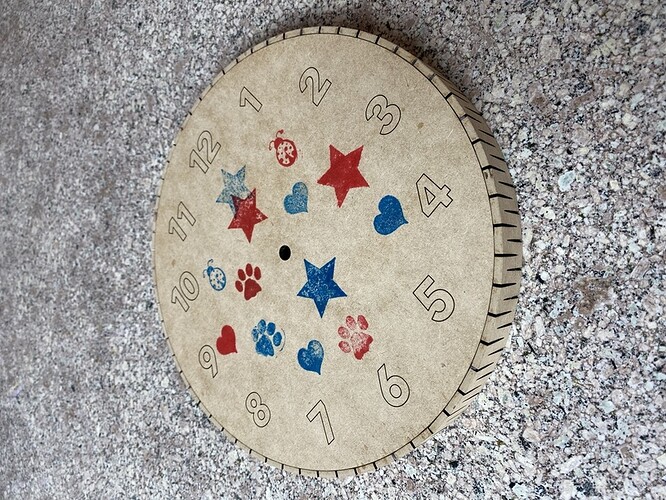After having three cheap wall clocks around the house die within a couple of weeks, I figured clockmaking might be more fun than clock shopping these days.
For my first clock I figured I’d keep it simple, not too ambitious with the design or materials. But then I looked at the boxes.py output I was starting from, and realized that the ends of the living hinge side pieces look like tick marks.
After much tweaking the generator, and then giving up on that and doing manual living-hinge design (much “measure n times, cut n-1 times”), I got to a side wall that’d wrap the clock face with 60 segments.
Actually, this is my second clock, but it’s the first I’m keeping. Before chewing up good ![]() maple on it I did some prototyping in draftboard. (There are a lot of living hinge pieces in my scrap pile now.) But that made a decent clock, too, so the kids decorated it with ink stamps to make a gift for some family. Here’s that one before attaching the clock movement:
maple on it I did some prototyping in draftboard. (There are a lot of living hinge pieces in my scrap pile now.) But that made a decent clock, too, so the kids decorated it with ink stamps to make a gift for some family. Here’s that one before attaching the clock movement:
Files & build notes in Free Laser Designs coming soon.


 but fear the precision needed. I have never tried, but I hear it can take a lot of tweaking to get it working correctly…
but fear the precision needed. I have never tried, but I hear it can take a lot of tweaking to get it working correctly…